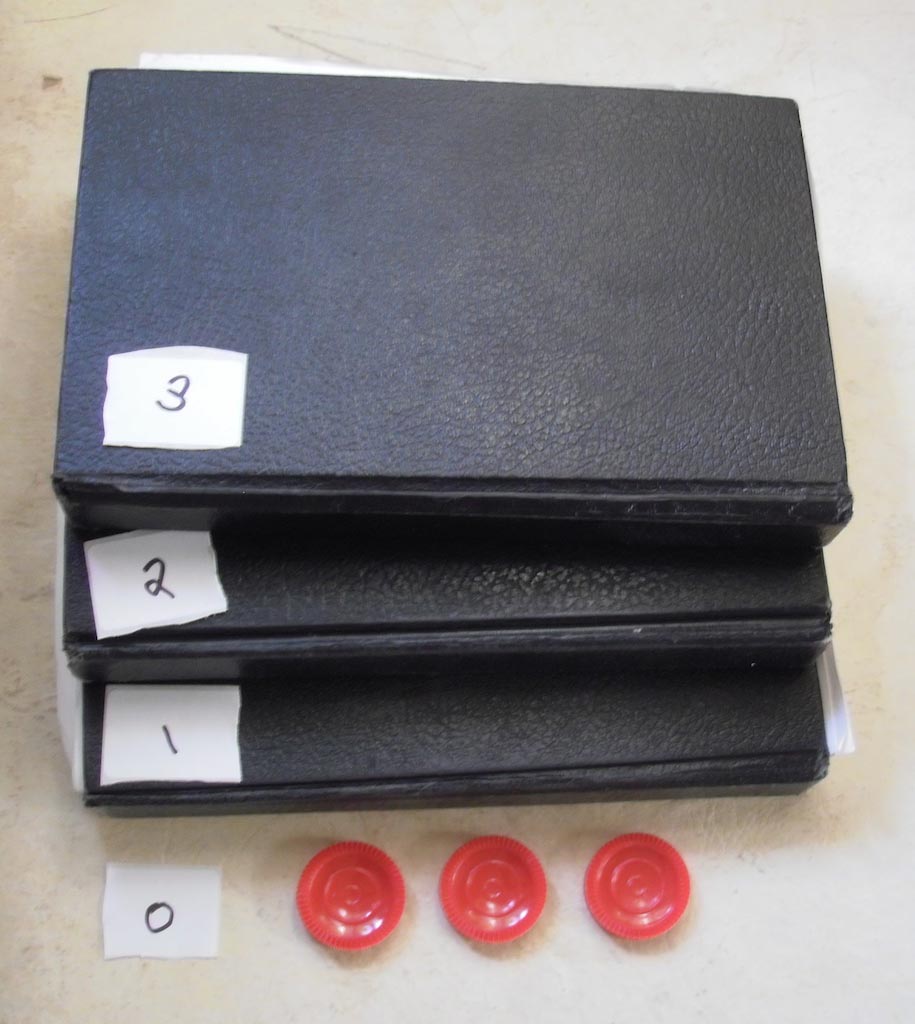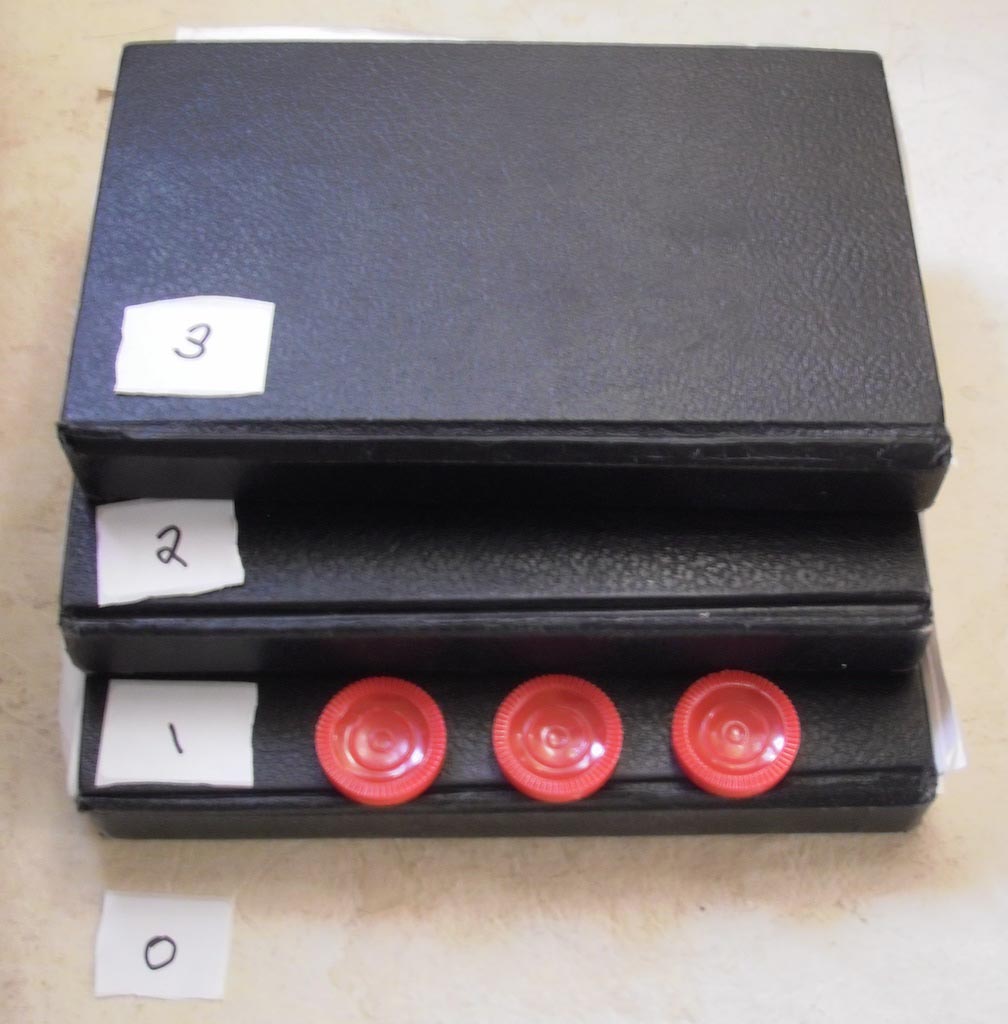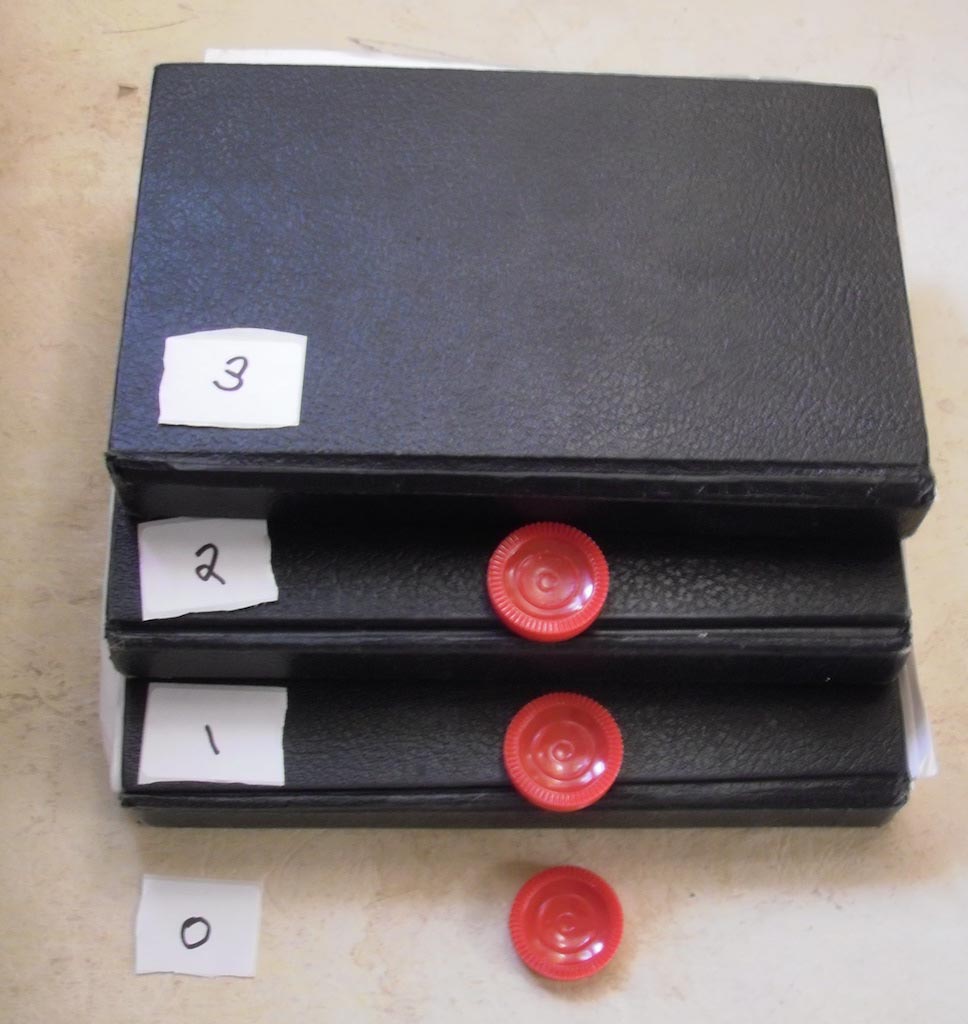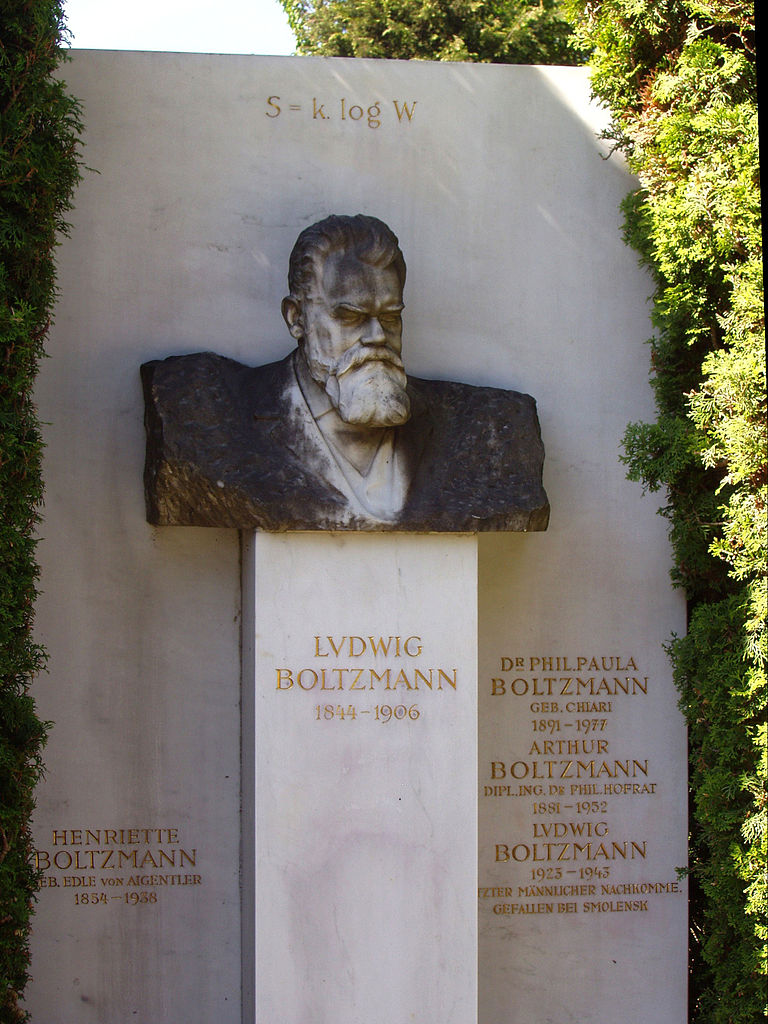
Hotter than infinite temperatures.
Introduction
Explore the meaning of negative temperatures.
Material
3 poker chips
3 books (These represent 3 energy levels plus the ground state energy
level which is the table.)
Assembly
Set the books on top of each other and slide them
to the side to make a staircase.
Use a card to label the table top 0 energy units (the ground state),
then label the top of the lowest book 1,
and top of the middle book 2
and the top of the top book 3.
These numbers are the energy values of the poker chips on each
stair.
Getting Started
One definition of temperature, T, is that 1/T =
dS/dU
where U is the internal energy in a system and
S is the entropy.
Approximate T = DU/DS
Where the symbol D
stands for change.
So temperature is the ratio of the change in internal energy to the
change in entropy.
For a history of different definitions of temperature see What is Temperature?
In systems like a box of ideal gas, when heat flows into the box, the internal energy of the box goes up and the entropy in the box goes up. So temperature of an ideal gas is always positive (the ratio of two positive numbers.)
Negative temperatures occur in lasers where atoms have discrete energy levels.
The three stairs,
created by books, represent three possible energy levels above the ground
state of each atom in the laser.
The three poker chips represent the three atoms.

Ludwig Boltzman proposed that entropy, S, was a constant, k boltzman's constant, times the logarithm of the number, W, of possible ways to create each state of a system. So that S = k ln W. (Boltzman was so pleased with this equation he had it carved on his gravestone.)
For simplicity, here we will use a simpler form of entropy and say it is S = log W where we use the base 10 logarithm and make the constant equal to 1, the result of doing this is to make entropy have units that are not SI units.
There is only one way to have a total energy of 0, all of the chips must be in the lowest energy level, (as shown above) since there is only one way to do this the state is said to be very ordered. If there are many different ways to make an energy level the state is said to be disordered it will have a higher entropy.
We can make a simple model that uses this definition to produce negative temperatures.
To Do and Notice
Place all the poker chips on the lowest step, step
0.
The total energy of the system, U, is 3 x 0 = 0.
The entropy of the system, S, is equal to log
W, There
is only one way to make a state with an energy level of zero, W = 1.
The
entropy is S = Log 1 = 0.
Consider creating a state with energy 2.
You could do this in two ways:
The energy of the new system is 2.
The energy change between theground state and this new system is
DU =
2.
There are 2 ways to arrange the chips to make a total energy of two,
you can have two chips in the energy level 1, or one chip in energy
level 2.
The entropy of the new system is equal to S = log 2.
The change in entropy is D
S = log 2 - log 1= log 2 = 0.3.
The temperature is proportional to DU/DS
= 1/0.3 which is positive and equal to 3.3 units.
Now evaluate the temperature at which the system goes from an energy of 2 to an energy of 3.
The energy of the new system is 3.
The change from the previous level is D
U = 1
There are how may different ways to arrange 3 chips on a ground state
and three levels
to produce a total energy of 3?
Try it yourself before looking at my answer.
There are three different ways of producing a state with an energy of 3: 1+1+1,1+2,or 3.


Two ways to produce an energy of 3.
Thus the entropy of this state is S = log 3 = 0.48.
and the temperature is T = 1/(log3-log2) which is a positive temperature of 5.6 units.
Now consider moving from an energy state with an
energy of 4 to a state with an energy of 5.
How many ways can you make each of these states? Once again figure
out the answer before you look below the line for my answer.
There are only three ways to make a state with an energy level of 4:
3+1 or 2+2 or 2+1+1
There are only two ways to make a state with energy 5: 2+3 or 1+1+3
So the temperature of this transition is
Change in energy 5-4 = 1
Change in entropy (log 2 - log 3)
Temperature is 1/(log 2 - log 3) = - 5.6 a negative number.
Notice that the energy of the system went up, yet it became more ordered. This is the recipe for producing negative temperatures.
What’s Going On?
A system with a finite number of energy levels, such as three, can have a lower entropy as the upper level becomes full, this is called a population inversion and is found in lasers, so negative temperatures are used to describe lasers.
The counting of states here assumed that the individual particles are identical, they are indistinguishable from each other. Slightly different counting applies if the particles are distinguishable.
Going Further
Negative temperatures are hotter than infinite temperatures
Start with the 3 chips to make a total energy of 3.
Then transition to an energy of 4. What is the
temperature?
The energy difference between the energy of the two states is 1 unit. 4-3 = 1
However each state can be created in the same number of ways, 3 each, so that the difference in the entropies is zero.
3 = 1+1+1, 1+2, 3
4 = 1+1+2, 2+2. 3+1
We define the temperature by its inverse 1/T =DS/DU to avoid division by zero.
1/T = 0/1 and 1/T =0 so T is infinite
Thus negative temperatures transitioning from energy 4 to 5 are on the other side of
infinity.
Negative temperatures are hotter than infinity.
Etc.
The temperature here is in a weird unit since we have chosen our definition of entropy to be S = log W, instead of S = k ln W, where ln is the natural logarithm and k is Boltzman's constant k = 1.38 x 10-23 J/K.
The temperature in kelvins is proportional to the temperature we use here.
The definition of the temperature of a monatomic ideal gas used in the 19'th century that temperature is the
average
kinetic energy of
random
translational motion
per molecule
is identical to this new definition when the new temperature is applied to an ideal gas. However, the new definition is independent of the idealness of the gas used, and it also allows us to extend the definition of temperature into new realms.

|
Scientific Explorations by Paul Doherty |
|
11 March 2013 |